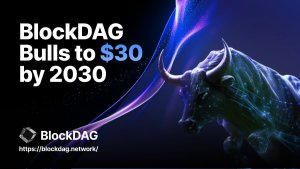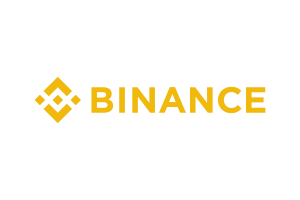“Mind The Gap!” – The life and times of a man on the move Episode 77
Who knows best? Yes, that’s right, the company with the largest market share…. or are they just being glib and drumming a point home?

In this weekly series, I look back on what stood out, what was bemusing, amusing and interesting during my weekly travels, interesting findings within the FX industry and interaction with an ever-shrinking big wide world. This is purely observational and for your enjoyment.
2020 – the year of proper liquidity contracts?
Let’s hope so.
If any message couldn’t be better timed, it was the utterance by XTX Markets this week that this year will represent a long overdue capitulation by the Tier 1 banks toward the OTC FX and derivatives industry.
If this can be believed, it is about time.
In my opinion, we electronic trading industry professionals have been extremely patient and lenient with the Tier 1 banks, especially during the past five years, literally allowing them to continue demanding massive balance sheets of in excess of $50 million in order to maintain a prime brokerage agreement that has already been in place for many years with no issues, to dictate to the FX business how trades will be passed to market, and of course the largest bugbear of all, insist on last look execution.
Perhaps, because FX dealing is a core business activity of most London-based Tier 1 banks which handle over 65% of all global FX order flow from the shores of Millwall Dock in Canary Wharf, they understand the massive demand and concentrated market control, therefore can enforce over-zealous risk management procedures onto liquidity takers in our industry, and then pick and choose whether to execute trades despite the commission business that they’re in.
This week I paid particular attention to XTX Markets’ assertion that during the course of this year, awareness and competitive pressures will compel market makers such as the Tier 1 banks to reduce holding times down to zero.
Now, we can either take this at face value, or we can consider it an opportune moment for XTX Markets to show the banks that it was ‘right all along’ about how to serve the OTC FX business, a facet that has led to XTX Markets taking number 1 slot in terms of global FX market share at Tier 1 level, usurping all of the once-dominant banks.
If this is not just a glib and over-confident attempt at telling the banks that XTX Markets knows its market better than they do and the figures tell all, – and let’s face it, XTX Markets certainly does know its market – then this is a great sign for our business and in particular, prime of prime brokerages and interdealer brokerage platforms.
Jeremy Smart, Global Head of Distribution at XTX Markets made his views public at the end of last year, saying that this new year and beginning of a new decade will mark the first nail in the coffin for the odious practice known as ‘last look’ execution.
Of course, we have heard this before, but not from a non-bank market maker that has gone right to the top and is now showing the banks how to do business in our industry.
I am inclined to go along with this line of thinking, because the dissent toward last look has been suppressed for too long – basically if a bank does it, we accept it despite their draconian rules on the criteria that OTC liquidity takers must meet before entering into a (very hard to get) counterparty credit agreement for prime brokerage, and despite the clear situation that the banks can do it without consequence, whereas if any of us did it, we would all be in the newspapers for slippage, not adhering to ‘best execution’, and fiddling trades to suit the broker rather than the client.
It has been a one way street for a long time, and the general consensus has always been that the Tier 1 banks handle all the top level liquidity, so we have no choice. Well not anymore they don’t, and the non-bank market makers have a far higher track record of filling orders.
The criticism of non-bank market makers until now has been that although they will fill the orders, there is a lot of latency, however if what XTX Markets is saying can be taken as a prophecy, we are looking at zero wait times very soon.
Last look is a trading practice where the liquidity provider provides a quote rather than a firm price into the trading system or execution venue.
When a request to trade against the quoted price is received, the bank may hold the request for some time, execute the trade at the price quoted, offer an alternative price or decline to trade.
Firm liquidity venues on the other hand operate an open central limit order book where trades are matched without optionality. This quote driven behaviour is commonly argued to be necessary to protect the liquidity providers in a fragmented and unregulated market place where there is no central exchange.
It has been often stated by FinanceFeeds that there would be a tremendous outrage if any non-bank entity attempted to implement last look practices, with potential accusations of ‘cherry picking’ or even operating a type of bucket shop where orders are only executed if in the interest of the broker, yet banks do it routinely and it is widely accepted, largely due to the bank being the provider of all liquidity to the FX market, and the might of the Tier 1 FX market makers which would be impossible to challenge.
I said in August last year that last look execution may well have been impossible to challenge even just two years ago, as demonstrated by now defunct FX brokerage Alpari (US) who admirably attempted to take several banks – including at-the-time largest FX dealer in the world Citigroup and other major banks – to court for damages that it alleged were caused by banks effecting last look execution on Alpari client orders sent to the live market for execution.
At the time, FinanceFeeds spoke to many FX industry executives about this, and the response was tremendous.
Admirable though this may be, it was inevitable that Alpari (US) was never going to win against the banks, especially considering that last look execution has always been a very important advantage that the Tier 1 FX dealers had over their liquidity takers.
Just two years on, things began to look somewhat different as we are for the first time half way through a whole year during which XTX Markets, a non-bank market maker, has held the top global position for FX market share, with the banks languishing behind it.
Non-bank market makers do not practice last look execution, and during the period of retraction from the extension of counterparty credit to OTC derivatives firms by banks between 2012 and 2017, non bank market makers stepped in to provide fast execution and a more aligned solution for brokerages.
By August 2018, things were bubbling up and six of the largest non-bank market makers raised this subject again, this time very seriously indeed.
These particular firms, which are the largest non-bank liquidity providers in FX began publicly calling for the practice of last look to be eradicated and replaced with firm pricing.
Citadel Securities, Flow Traders, HC Tech, Jump Trading, Virtu Financial and XTX Markets issued statements denouncing last look and demonstrated their opposition to opaque and inconsistent practices among market-makers.
Just a three years ago, during the height of the tug of war between OTC derivatives liquidity takers and Tier 1 banks which created a sense of dependency by showing their reluctance to extend counterparty credit to OTC liquidity takers yet still give them the impression that they had to rely on banks, there was a very different dialog, with banks firmly in charge.
FX experts contended at that time that market makers need access to last look to protect against trading on stale prices due to latency and from high frequency trading clients that have asynchronous information advantages. Over time, last look was also a factor that allowed for non-bank liquidity providers to enter the market, noted Lowry. Some supporters contend it allowed for more liquidity and more competitive pricing.
“Last look came about as a protection for the banks against latency arbitrage because they didn’t have the speed of technology. The rules were you could have last look. It’s kind of morphed into some places where it’s actually a free option,” said David Ogg, CEO of Ogg Trading at Market’s Media’s Global Market Summit in December 2016.
Yet, others question whether last look is necessary since market makers now have faster technology and sophisticated risk management systems that can automatically hedge their spot FX exposures.
It had to happen at some point, the question was always surrounding exactly when, and which non-bank electronic trading firm would actually have the mettle to stand up to the Tier 1 banks.
In my opinion, it is about time this was addressed, largely on the basis that execution quality has been the priority of financial markets regulators, brokerages with B2B relationships with their prime of prime providers, and retail customers alike, to the point where slippage, requotes, rejections and non-instantaneous trade closing have become absolutely unacceptable.
I have said before, on different occasions, that whilst retail FX brokerages and the prime of prime brokers that supply them with aggregated liquidity are absolutely bound by contract (even more so when MiFID II is invoked and makes them stick religiously to the specific execution type that they are registered to conduct) to provide absolutely transparent and timely execution, banks are allowed to decide whether to reject trades, placing the onus back on the liquidity taker to process it and ensure that they not only mitigate risk, but ensure the client orders are filled so that nobody does their stack at the user end.
For several years, this practice has been considered controversial, and central banks across the world are relatively averse to its existence, yet it continues to be part of the overall topography of institutional electronic trading at Tier 1 bank level, thus by its very standing at the very top of the trade pricing and execution structure, is a practice which filters down by default and affects all components via aggregated liquidity feeds and eventually to retail brokerages.
In May 2015, BATS Global Markets, which operates institutional multi-asset platforms and now owns major institutional ECN Hotspot FX having bought it from KCG for $365 million, began to curb the practice over a course of several weeks, placing limits on how many ‘last look’ orders could be executed in order to take its own step in increasing transparency in the non-bank FX market.
Admirable indeed, perhaps. However, although certain measures such as this have been taken by large institutional firms, EBS, the electronic brokerage division of British interdealer broker ICAP, having gone a stage further in February 2017 by implementing a policy which aimed to abolish the need for last look execution altogether with the launch of the firm’s new EBS Live Ultra price feed which streams real-time market data from EBS Live which is operated by the firms EBS Broker Tec division, last look is alive and well at bank level.
Whilst not a mandatory implementation, EBS stated at the time that it took this action as a result of feedback and demand from corporate clients.
Just seven years ago, the same interdealer broker was looking at putting in a ‘latency floor’ – jargon for intentional delay before executing trades on its multi-dealer platform – to level the playing field. Not much chance of that becoming common practice now.
XTX Markets’ dialog from Mr Smart as this year came round stated “I expect the remaining top 10 banks to move to zero hold times, partially because of independent and transparent transaction cost analysis (TCA), providers and partially because the interbank venues are moving to real time TCA.”
By contrast, the banks have stuck rigidly to their single dealer platforms which reject and reprice trades ad infinitum.
One of the old school, well known last-look orientated single dealer platforms is Barclays BARX system.
Five years ago, the company made an initiative to close the accounts of 7,000 low-return retail banking customers, or move them to another bank in what is being hawked under a politically correct description, that being that it is attempting to reshape its offering to keep pace with tighter capital rules.
More likely, Barclays saw traditional banking as an expensive, resource-hungry exercise and is looking to remove as much of it as possible from the high streets of Britain and Europe.
This is a direction that Barclays has been taking for quite some time. FinanceFeeds was made aware back in 2016 by several senior executives of established small to medium enterprises in Britain whose business accounts had been run to perfection, simply finding that Barclays has terminated their accounts.
Barclays at that time was the world’s third largest Tier 1 FX dealer by volume, with 8.11% of the world’s order flow going through its books.
Barclays is also one of Europe’s largest retail traditional banking institutions, with a network across the entire continent from its base in London.
…or rather it was one of Europe’s largest traditional banking institutions.
It had become clear that economies of scale are vital for large financial institutions, however Barclays has been conducting its dominance by focusing on FX and other interbank derivatives asset classes rather than its traditional business, as in the summer of 2016 weeks ago the British company completed its complete exit from the European market’s traditional banking sector, culminating in the sale of the final remaining 74 branches in France to private equity firm AnaCap Financial Partners, meaning that it now can concentrate its efforts solely on being at the very forefront of London’s global electronic trading epicenter.
Structural changes to the markets, management upheaval among many big banks, new non-bank entrants and lack of volumes and volatility had seemingly levelled the playing field among the industry’s biggest firms.
The biggest change in the rankings that year was the decline of the combined market share of the top five global banks. Their market share peaked in 2009 at 61.5% and was still above 60% as recently as 2014.
By 2015, the top five banks accounted for just 44.7% of total volume, however Barclays battles it out in the race for supremecy with Citi and Deutsche Bank, both of which also conduct their entire business from London.
So, that was the end of Barclays’ operation of branch banking across European high streets, a direction that concluded the Bank’s offloading of its entire Barclaycard credit card operations in Spain and Portugal to Bancopopular-e, a total divestment of its stake in Barclays Africa, a complete dispensement of its Egyptian operations and the sale of its wealth and investment management business in Singapore and Hong Kong.
Meanwhile, on home territory, Barclays continued to stand out in terms of procedure and its domination of market practice with regard to electronic trading with its BARX single-dealer platform.
As I mentioned, Barclays is one of the world’s most prominent proponents of the last look execution procedure, its BARX platform which provides FX liquidity by streaming indicative prices on an in house and third party platform basis.
Barclays’ corporate standpoint on the reasons why it uses last look methodology is that being one of the world’s largest interbank FX dealers, it does not generally seek to reject trade requests. However, electronic spot FX market-making is a highly competitive industry and for the reasons set out above it necessarily exposes the liquidity provider to the risk of trading on incorrect pricing.
Barclays maintains that last look functionality is used to protect against these risks and allows liquidity providers to show considerably tighter electronically streamed prices than they otherwise could – something that the bank considers beneficial to every user of electronic FX trading platforms and is very hard line with regard to this.
The bank had been aiming by the middle of last decade to get at least a 10 per cent return on capital from its markets clients and had launched a computer system called Flight Deck to help rank customers based on their returns levels and identify those who are currently not making the grade.
“Regulators take a very dim view of institutional practices that emphasize a lack of transparency and that encourage employees to give either misdirection or less than complete information to counterparties when direct questions are asked,” said Mike Miller, litigation partner at Steptoe & Johnson, who spoke during a webinar on this matter at the same time as Barclays began this direction.
In one high-profile case, a global bank used its spot FX trading platform to reject unprofitable trades. When customers asked why the trades were rejected, the bank reportedly gave “vague or misleading answers,” said Steptoe partner Jason Weinstein who analyzed the case during the webinar.
After a regulatory settlement, the bank posted detailed disclosures on its web site and also paid a steep fine, setting a precedent that could impact other banks, brokers and market-making firms.
FinanceFeeds has spoken at length with a number of senior executives within the institutional and prime brokerage sector over the years, many of which have openly stated that many institutional participants do not like firms that offer ‘no last look’ execution, despite the regulatory and government derision aimed at the practice, yet Barclays continues to focus on this via its BARX platform which is now becoming a mainstay of the bank’s business.
Brett Tejpaul, another co-head of global distribution for credit and equities at Barclays also stated “The onset of capital rules changed the business – more now isn’t necessarily better and we need to be a lot more selective. In the past we all had a rather one dimensional view through the revenue metric.”
Going back to our industry’s specialist companies, back in 2017, we spoke to executives at a pre-acquisition FastMatch, who told us “We would like to see the world without last look execution, because we feel that it would be more fair that way, however we do understand that the FX market is the biggest market in the world and the market has been operating with last look for all these years so it is not like one particular bank or broker is doing it and nobody else is doing it.”
“As far as we are concerned, when you think about what last look actually is, it is a type of free option. For example, if a customer comes and says that he wants to trade with your price, and you as a market maker say that you don’t want that trade anymore, this creates a free option for the market maker as to whether to transact or not.”
“One of the routes that we are taking is to offer brokerage-free trading to participants that do not use last look execution. The rationale behind this is to compensate a company financially if they dont use that option. The ‘free option’ of being able to use last look has monetary vlaue, therefore we would like to offer free brokerage to those who don’t use last last look” was the internal perspective at FastMatch.
“The second thing we set in place with regard to this was to introduce a new order type, which is called Leak/Sweep Protection, or LSP for short. “What this order type does is outsource the entire last look facility of a trade to FastMatch. Fastmatch performs the check to see whether the trade is going to go through or not. It is for clients that are using that order type, they don’t disclose the order type to the market maker which ensures that it cannot be rejected” they said.
Yes indeed, and FastMatch went on to be acquired very shortly after that conversation by Euronext, as an example of yet another listed derivatives venue wanting to get into the OTC market. Perhaps they knew who the issuers and main market makers would be in the then-near future, and how they would show the banks a clean pair of heels.
For all of these reasons, there is quite a lot of weight in what XTX Markets are saying, let’s see if it comes to fruition.









